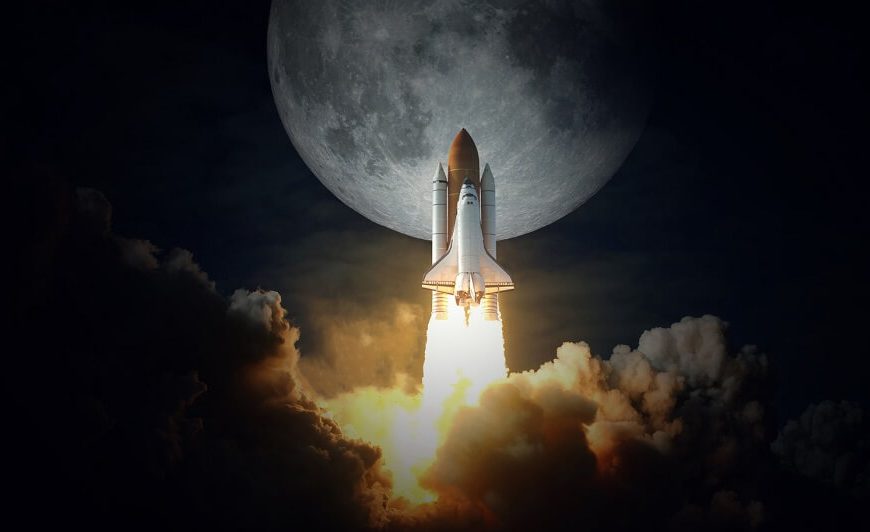Everybody is talking about Chandrayaan 3 today but what is Chandrayaan 3? India made history as the Indian Space Research Organization, commonly referred to as ISRO, launched Chandrayaan-3, its third lunar exploration mission. The mission was to soft-land on the moon and deploy a rover and with its success, India has become one of the few elite countries to have landed on the Moon, along with the USA, China and the former Soviet Union. This mission followed in the wake of Chandrayaan 2 which was launched in 2019 and has brought numerous accolades to India. With this landmark victory, it’s important as Indians to know some of the facts behind this mission so that we can appreciate the time, money and effort that went into it.
Objectives of Chandrayaan 3
- A soft and safe landing of the lander on the moon
- Observing the driving capabilities of the rover on the moon
- Understanding the composition of the moon better by conducting and observing experiments on the material available on the surface of the moon.
Chandrayaan 3’s Orbit
Chandrayaan 3 was placed in a trans-lunar injection orbit after a series of manoeuvres. On 5th August 2023, ISRO performed a lunar-orbit insertion which successfully placed the spacecraft into orbit around the Moon. This operation was carried out in Bengaluru from the ISRO Telemetry, Tracking, and Command Network. The last phase of the mission began on 17th August 2023 when the Vikram lander separated from the propulsion module.
Chandrayaan 3’s Descent
On 23 August 2023, when Chandrayaan 3 was 30 kilometres above the moon in orbit, its 4 engines fired again in the rough braking phase. After 11.5 minutes, the spacecraft was 7.2 km above the moon’s surface and maintained its altitude for about 10 seconds. During this time, the lander stabilised itself using 8 smaller thrusters and started rotating from a horizontal to a vertical position while continuing its descent. It then used 2 of its 4 engines to descend to roughly 150 metres, hovered there for about 30 seconds before continuing downward and touching the surface of the moon.
Facts About Chandrayaan 3
- Chandrayaan-3 was launched on 14th July 2023 and landed on the moon safely on 23rd August 2023 and is now set to explore the moon’s surface. The spacecraft comprises a lander and rover which were launched into space by the LVM3 rocket from Sriharikota. Chandrayaan-2 also consisted of an orbiter, a lander, and the Pragyan rover but due to a software glitch, it deviated from its trajectory minutes before landing and crashed. Though the mission ran into problems, Chandrayaan 2’s orbiter is functioning till date and provides valuable data to ISRO.
- The Bahubali rocket, the technical name of which is GSLV Mark 3 heavy-lift launch vehicle, supported the moon lander called Vikram. This launch vehicle is 43.5 metres tall and supported the lander on its voyage of more than 40 days.
- Chandrayaan 1 was launched in 2008, followed by Chandrayaan 2 in 2019 and by Chandrayaan 3 in 2023. India’s first lunar mission, Chandrayaan 1 was a great success and the presence of water molecules was discovered on the moon.
- Chandrayaan-3 was launched on 14th July 2023 at 2:35 PM from the Satish Dhawan Space Center in Sriharikota. After landing on the South Pole of the Moon on 23rd August 2023, the rover was deployed for exploration of the moon’s surface.
- After the glitch in Chandrayaan 2, ISRO made several modifications to enhance the reliability of Chandrayaan 3. There are a few significant differences between Chandrayaan 2 and Chandrayaan 3. The craft consists of a propulsion module, the lander Vikram and the rover Pragyan. The weight of the lander is 1,752 kilograms which is about 280 kilograms heavier than the one in Chandrayaan 2. The lander also carried more fuel than Chandrayaan 2 so that it did not deviate from its intended path to the moon’s surface. The spacecraft also had to undergo a whole host of vigorous tests and stringent safety measures so that no glitch arose during the mission.
- The whole spacecraft weighs 3,900 kilograms with the propulsion module weighing 2,148 kilograms, and the lander and the rover weighing 1,752 kilograms. Once near the moon, the orbiter will carry Vikram lander to enter a circular polar orbit 100 kilometres above the surface of the moon.
- After landing on the moon, the Pragyan rover was deployed to explore the moon’s surface. Vikram released the 6-wheeled rover using a ramp. The rover carries 2 spectrometry to study the lunar composition and is powered by solar energy. The rover will move around the landing area for approximately 14 Earth days, which is about one lunar day of sunlight.
- Vikram Lander is also equipped with scientific instruments and is carrying a seismometer to detect moonquakes. An instrument to study heat movement through the surface of the moon is also installed. It also carries an instrument to understand the plasma environment around the moon as well as a retroreflector to help understand the gravitational pull between the Moon and Earth.
- An important thing about Chandrayaan 3 according to the Chairman of ISRO, Sreedhara P. Somanath, is that instead of going for a success-based design, they opted for a failure-based design to ensure a successful landing even in the event of a few components failing.
- Apart from India, the only other nations that have attempted a lunar landing are the erstwhile USSR, the USA, China and Israel. The erstwhile USSR has had 14 attempts of which 2 were successful, USA has had 5 successful missions out of 8 missions. China has attempted 2 missions, both of which were successful and Israel’s one and only attempt failed.
The launch and successful landing of Chandrayaan 3 on the surface of the moon has won India many laurels and it has become a forerunner in space research. India’s global standing has received a major boost in the field of space exploration and we have to believe that this is just the beginning and ISRO is sure to get many more feathers in its cap. If you are looking for more information about Chandrayaan 3 and India’s space programme, do visit the EuroKids website and update yourself on the latest information.













